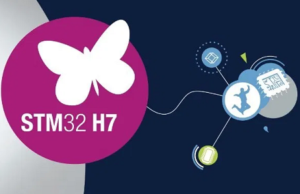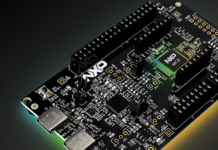
STMicroelectronics revealed its STM32H7 microcontrollers at electronica India 2019 for Indian Customers. The product briefing was addressed by Vinay Thapliyal, Technical Marketing Manager, MCU, India. STM32H7 microcontrollers comes with uniqueness of dual-core architecture, comprised of an Arm Cortex-M7 core clocked at up to 480 MHz and a Cortex-M4 core clocked at 240MHz. STMicroelectronics Claims STM32H7 as industry’s highest-performing Arm Cortex-M general-purpose MCUs which offers record performance, power-saving features and enhanced cyber protection. Engineers get the benefits of two MCU without the complexities and design challenges that would come from having two different components on the PCB.
Reasons to choose Dual Core STM32H7
- Additions of a Cortex-M4 boost its performance and increase the CoreMark score by 800 points.
- The dual-core architecture is highly flexible and each core exists in an independent power domain to optimize energy consumption significantly. If your application does not require Cortex-M7, you can turn off its power domain without affecting impact on the other core. Thus achieving better dynamic power consumption.
- For the first time in an STM32H7, comes with MIPI display serial interface (MIPI-DSI) which makes it ideal choice for portable video game consoles or appliances.
- For more flexibility it has three 16-bit analog-to-digital converters (up to 3.6 Mega Samples per second).
- For Industrial application it has two FD-CAN interfaces and Ethernet controller.
- Dual-Bank Flash for seamless firmware updates enables major updates without any downtime.
- With Root Security Services with hardware crypto secure firmware flashing in order to prevent hacking and protect IP
- STM32H7s can now safely reach 105 ºC, thus able to run specific applications without active heat dissipation.
- The dual-core versions of the STM32H7 include a switched-mode power supply (SMPS) to improve the MCU’s power efficiency significantly compared to a microcontroller using a more traditional LDO
For more information visit: www.st.com/STM32H7



















